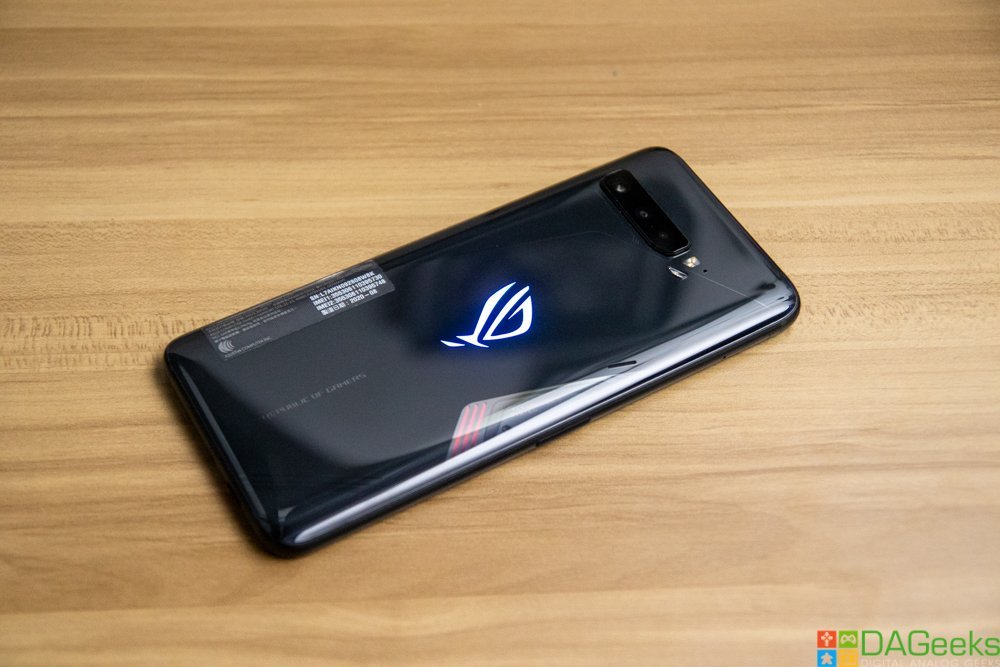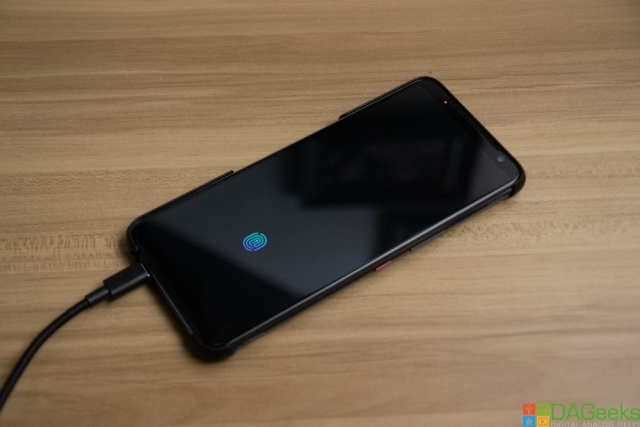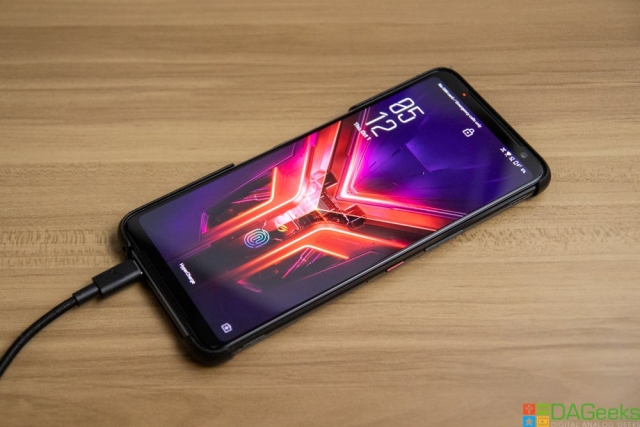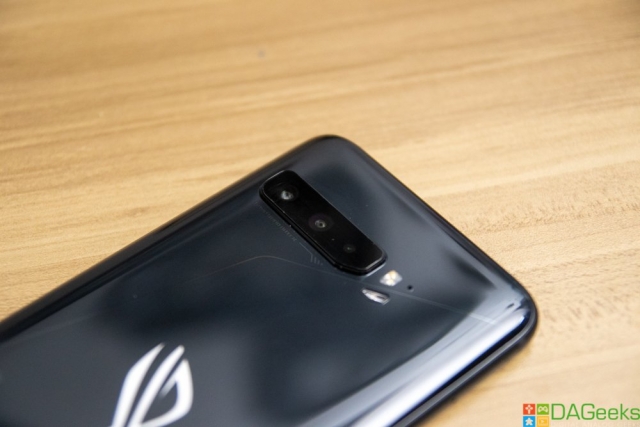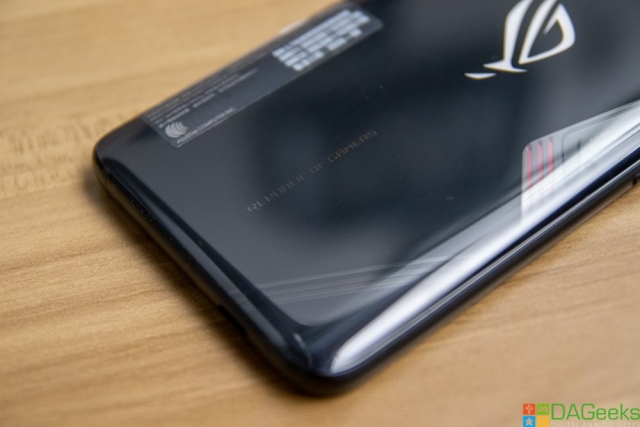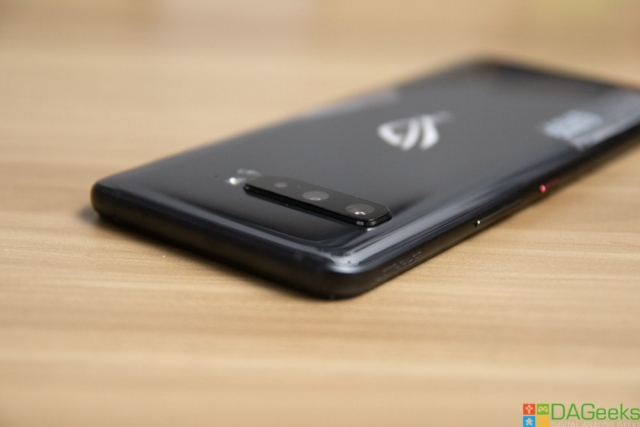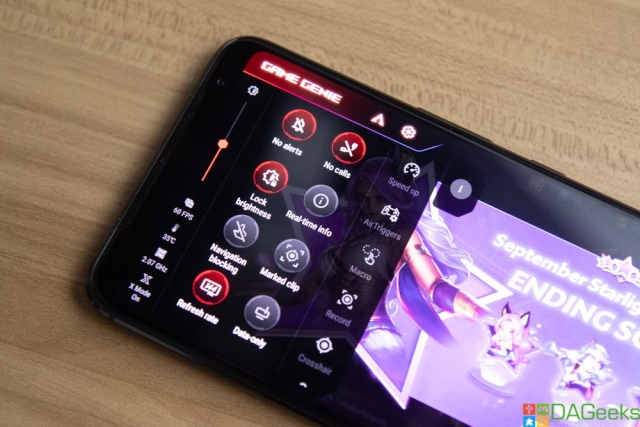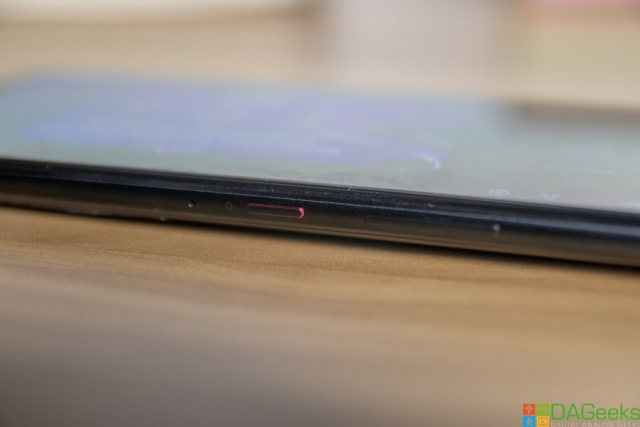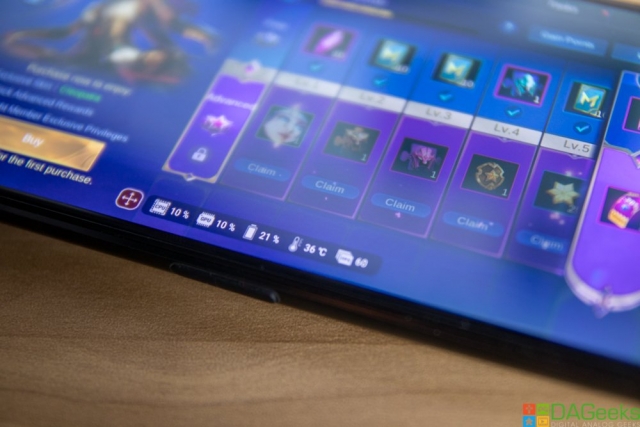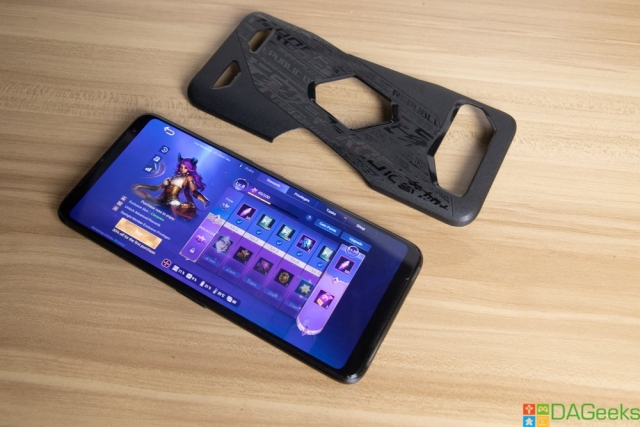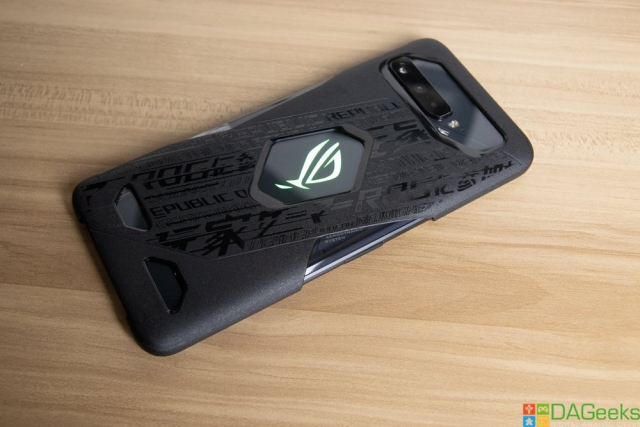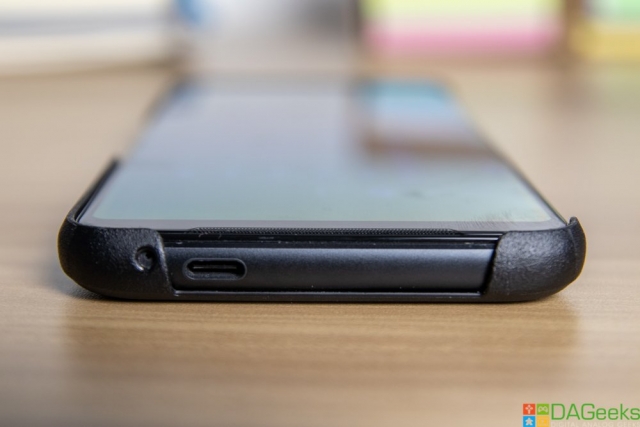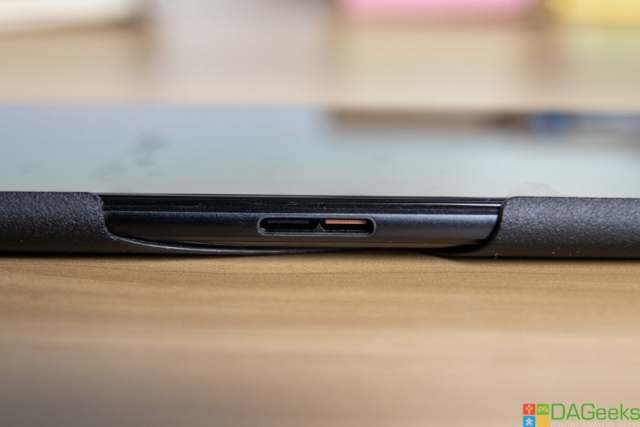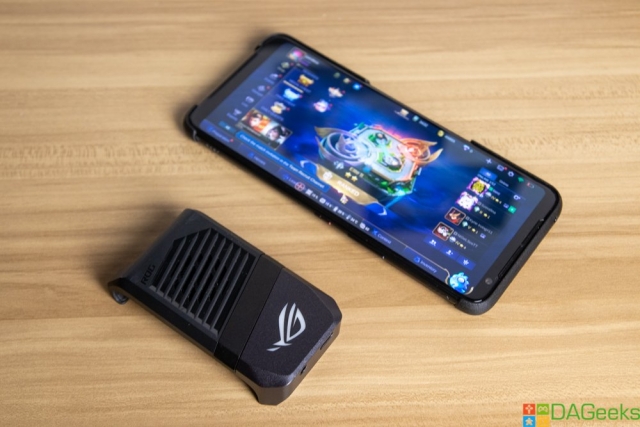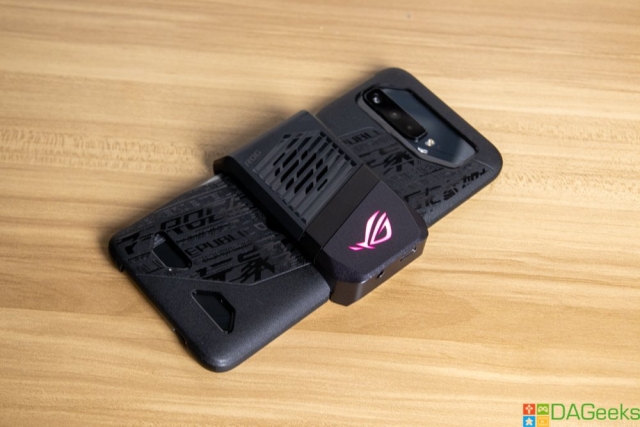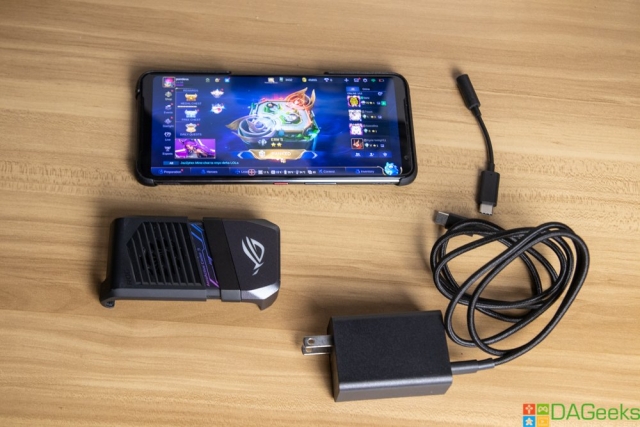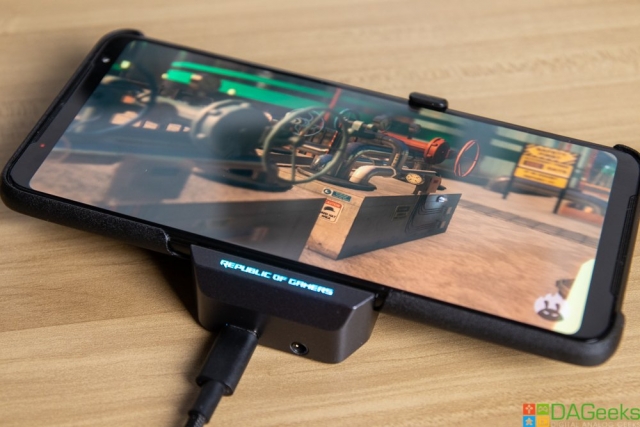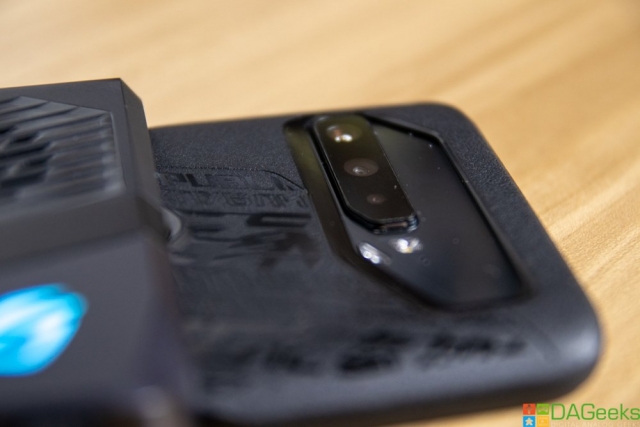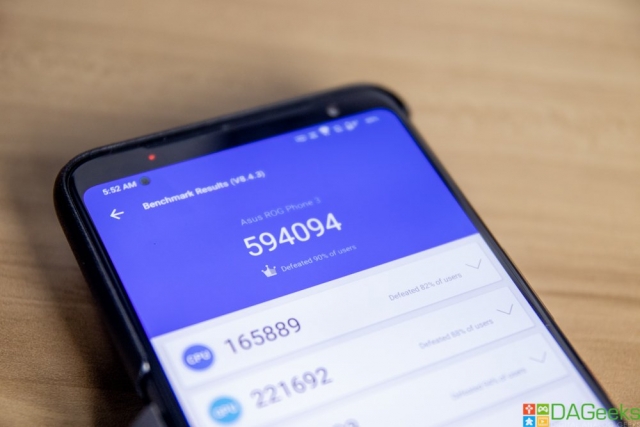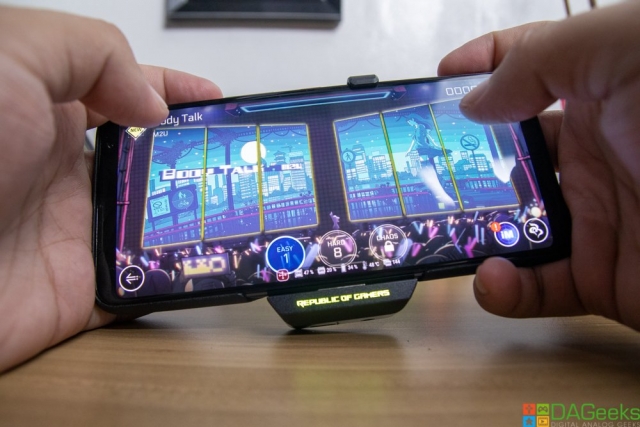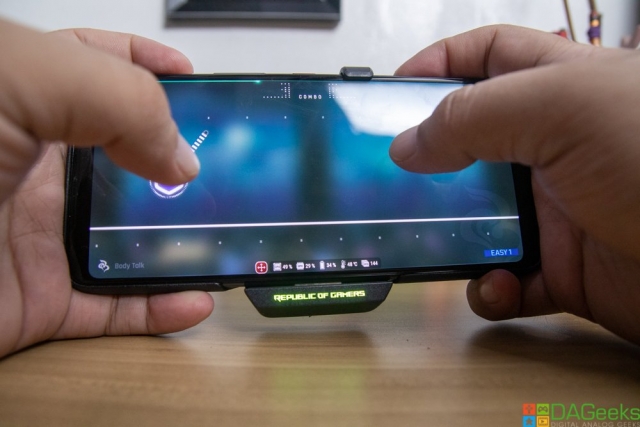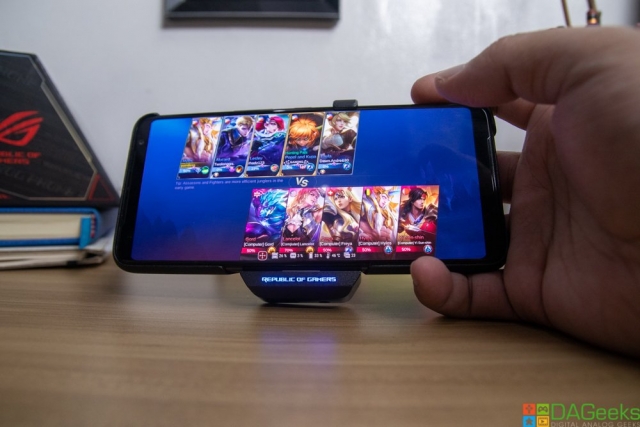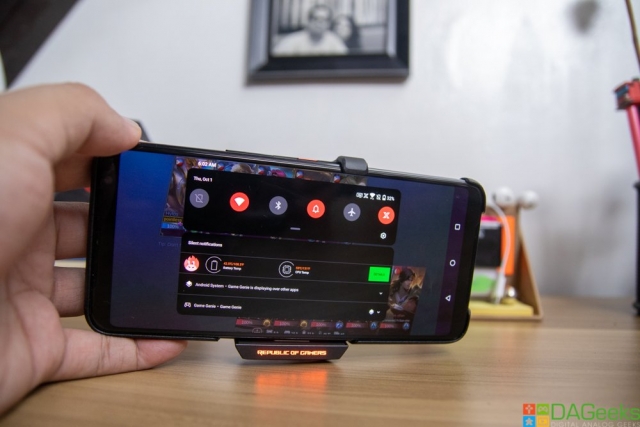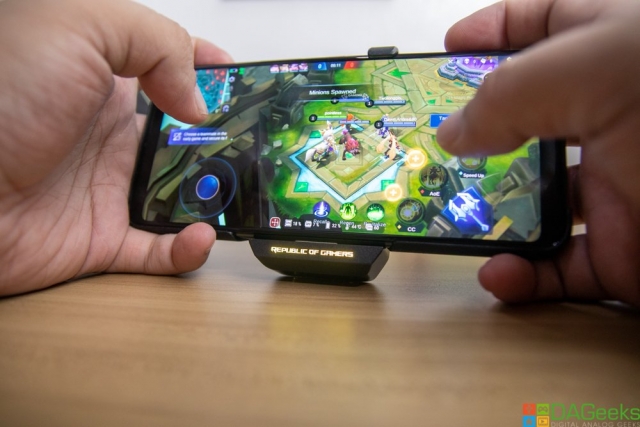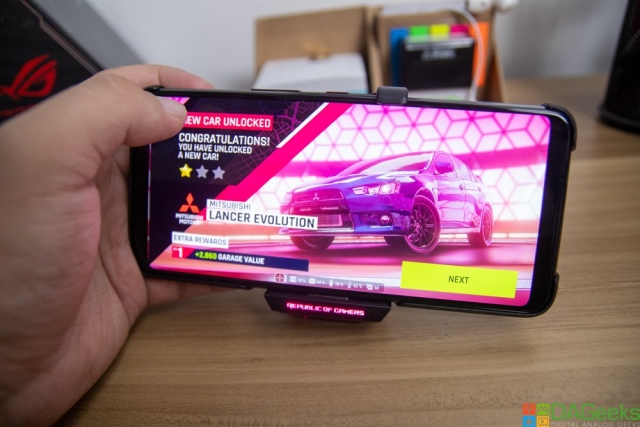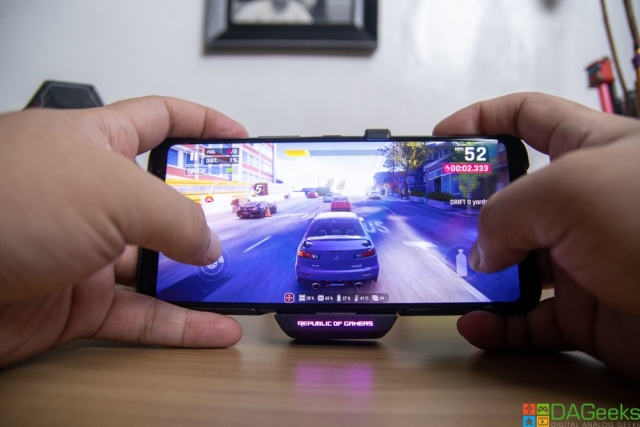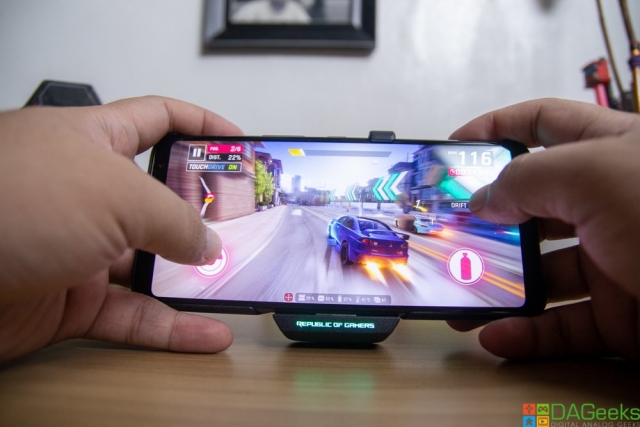We’ve seen ASUS ROG knocked the mobile gaming scene out of the park with its previous generations of the ROG Phone. Surely, ASUS used their experience with the past 2 ROG Phones to build a superior, more optimized ROG Phone 3. And this latest iteration of this mobile gaming machine does not disappoint.
The ROG Phone 3 sets the bar for what a gaming phone should aspire to be. It has all the power a gamer will need, a big battery for long sessions of gaming, a plethora of accessories to enhance the gaming experience, a software suited to a gamer’s needs, and a phone, that you can call people with. I still wouldn’t line this up with the flagship phones of other mobile phone brands as the ROG Phone 3 is in a segment of its own, competing with the likes of the Razer Phone, Black Shark, and RedMagic to name a few.
I took the ROG Phone 3 out for a spin, and here’s what I thought.
Design and Hardware
The first thing I noticed was the toned-down but still identifiable look of a gaming phone. ASUS turned the design down a bit and made it look simpler, flatter with a subtler geometry at the back. Even though I find the ROG Phone 3 too big for everyday use, its size gives it a more immersive handheld gaming experience. It’s also ergonomic as most games we play on the mobile phone require us to grip both sides.

The 6.59” 144Hz screen is a delight to play on with its bright colors and fast refresh rate. It’s also a welcome feature that the ROG Phone 3 doesn’t have any notch whatsoever. The stereo speakers are still there but with more powerful drivers enough to fill a room, but now with a subtler look as the orange accents are gone. It also features GameFX, which boosts the sound quality from ASUS’s new partnership with Dirac, a Swedish company known for DSP and high-end audio stuff from car stereos to home theaters. That’s about it upfront, the large screen and the stereo speakers, and a 24MP selfie camera without the notch. No distractions whatsoever.
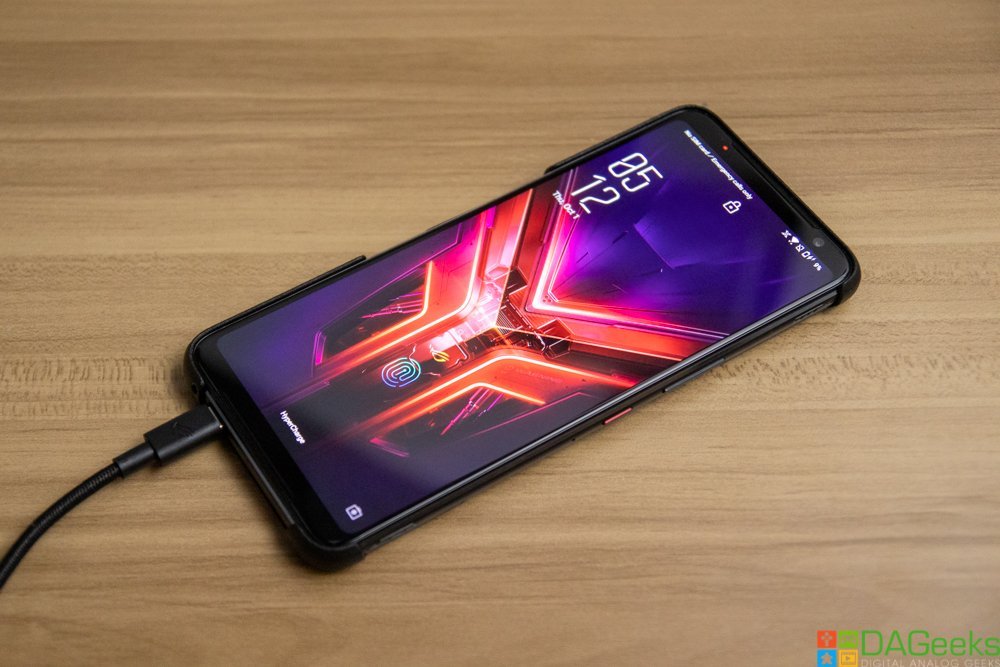
All of the clickable buttons are on the right side of the phone. You have your volume rocker and power/unlock button plus the AirTrigger 3, which is barely visible but gives you the edge among competitors in the market. It’s just a different experience being able to map virtually anything on your screen with the AirTriggers. This feature alone makes the ROG Phone 3 a delight to use in competitive games. The AirTrigger 3 has been updated to support sliding, swiping and the possibility to divide each button into 2 partitions, so you’ll easily have 4 shoulder buttons versus 2. It also features a single shake trigger, giving you effectively 5 extra buttons. You can also set the AirTriggers with a long or short squeeze outside of games to any function.
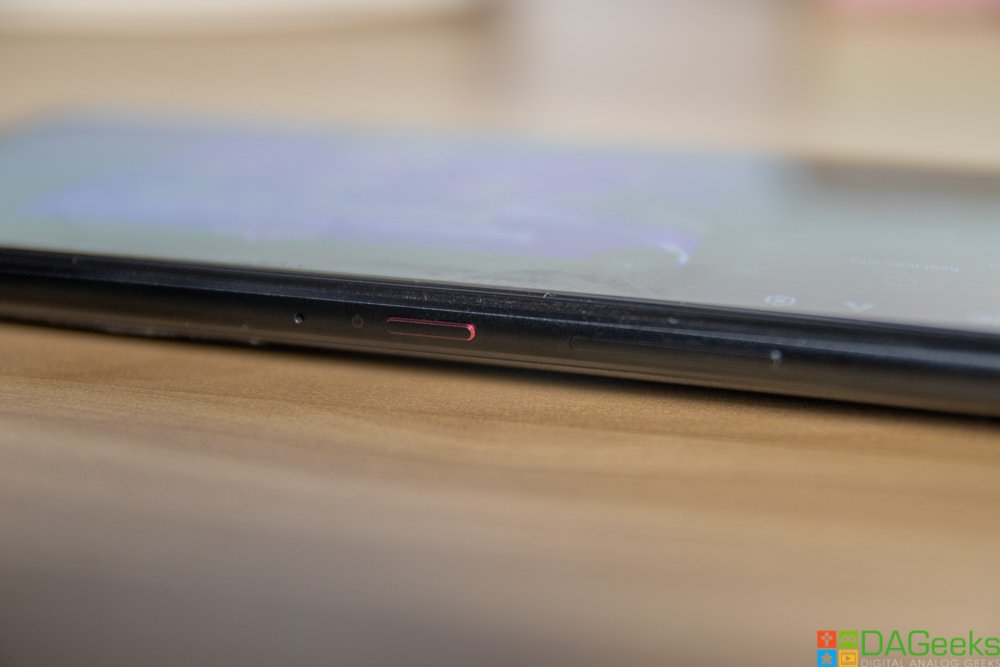
On the left side, you have the dual USB-C ports dedicated to ROG Phone 3 accessories. You’ll notice that there’s no 3.5mm jack anywhere on the phone. It’s actually embedded in the included AeroActive Cooler 3 clip-on external cooling fan. As the ROG Phone 3 is meant to be used in landscape, the AeroActive Cooler 3 has a USB-C charging port and the 3.5mm audio port in it so you can charge without the cables getting in the way.

Nothing much on the bottom but a lone USB-C charging port offset to the left side of the phone.
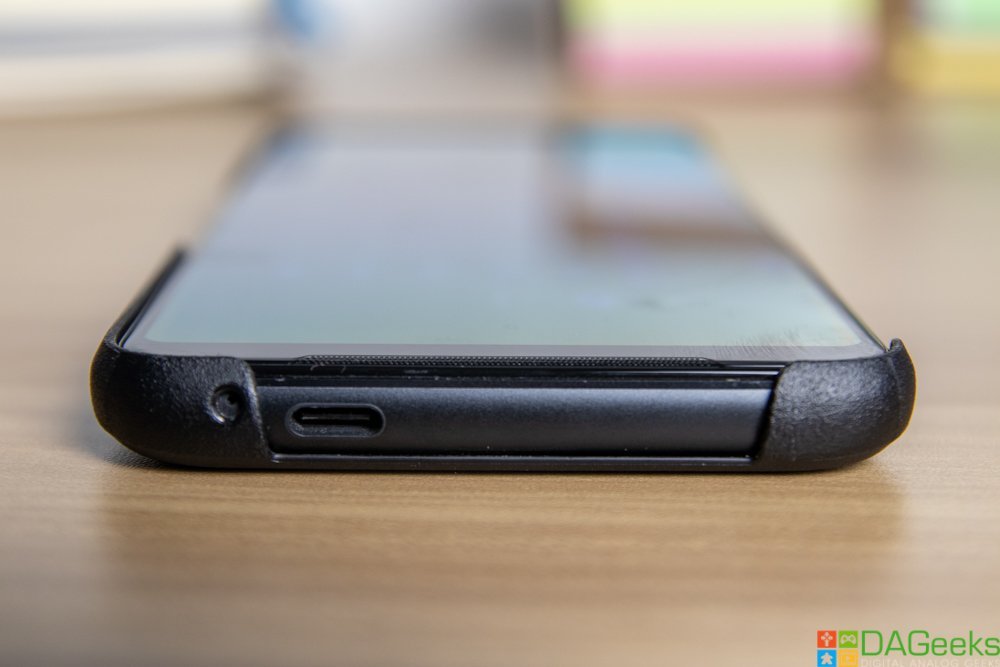
The backside of the phone is a lot tamer than the previous 2 ROG Phones. It still has the ROG logo which is RGB that you can control with the Armoury Crate software. You can also have it sync with AuraSync-enabled devices. You’ll also see the triple camera bulge with dual flash. The main cam is a Sony IMX686 64MP wide-angle camera. There’s also a wide-angle and an ultrawide lens to cover a range of uses. We won’t be tackling the camera performance here as it’s not its main selling point, but I have to say that it takes decent photos and will easily satisfy your inner mobile photographer.
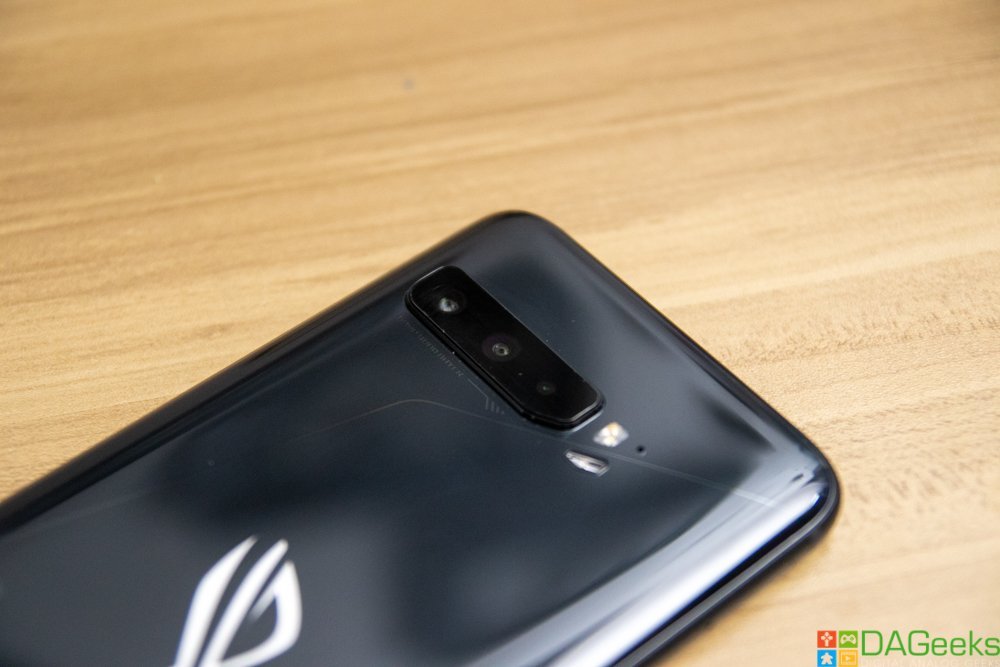
Performance
This thing is a beast. That’s all I have to say. It’s powered by the latest Qualcomm Snapdragon 865 Plus running at 3.1GHz. That’s faster than most entry-level laptops. It has 16GB of RAM, which is twice the memory of the desktop I’m typing this on. And it has plenty of space with up to 512GB of storage that’s equipped with UFS 3.1, so you get virtually zero load times on any game even if you tried. To top it all off, all of these are being powered by a massive 6,000mAh battery that can last you a day and a half. And if ever your battery gets depleted, the included HyperCharge adapter can get it up to 80% of its capacity in no time, and that 80% is one full charge of a regular smartphone.
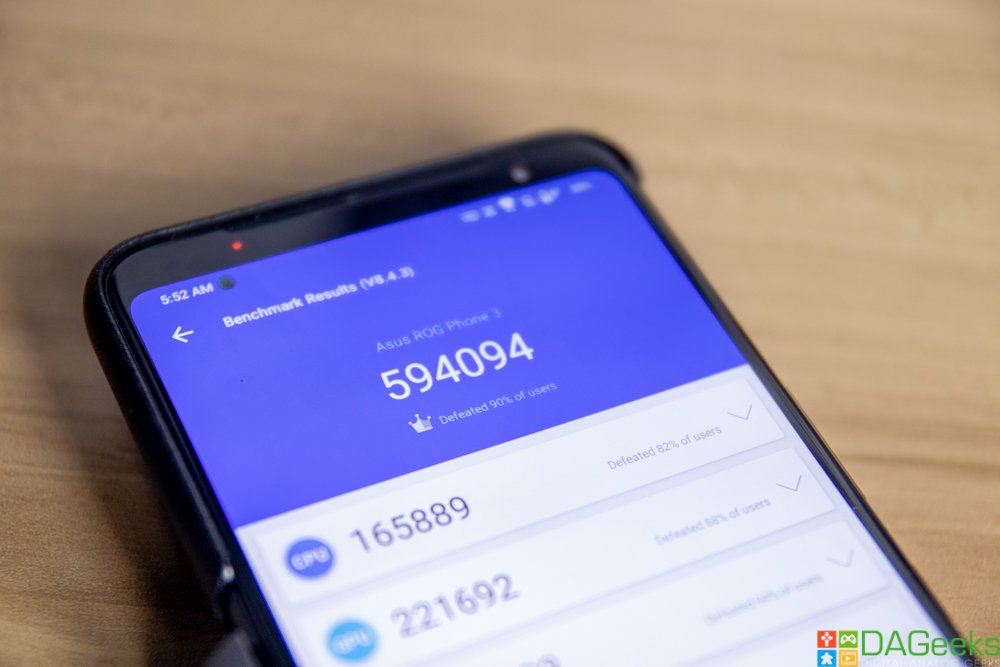
Now given all this power and juice, things can get pretty hot. But thanks to its advanced 3D vapor chamber and a large heat sink that covers all the right surface, heat dissipation is top-notch and prevents thermal throttling during gaming. The included AeroActive Cooler 3 also helps in maintaining the temperature at the back at comfortable levels so you can be sure to have cool fingers all throughout your gaming session.
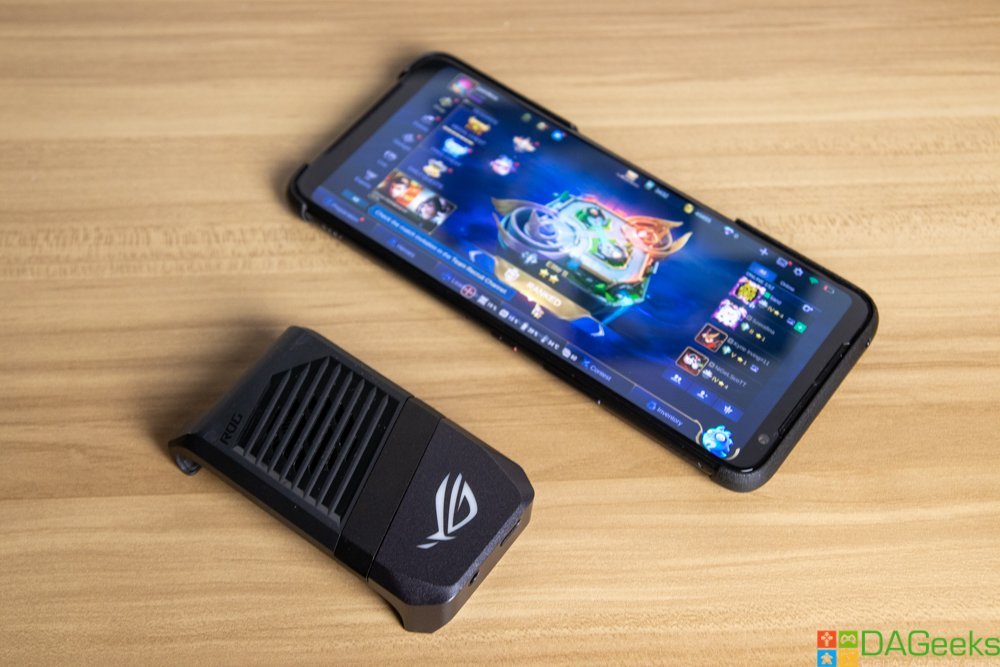
Gaming Experience
I’ve reviewed the very first ROG Phone and its successor, and well, the third time’s a charm. ASUS was able to make the ROG Phone better than the last generation, for 3 generations, without compromising on the gaming experience a user can have. When I first used the first ROG Phone, the AirTriggers made it bearable to play first-person shooters on a mobile phone. It also served as extra buttons and gave you an advantage of using 2 additional fingers versus others who would’ve used only their thumbs otherwise.
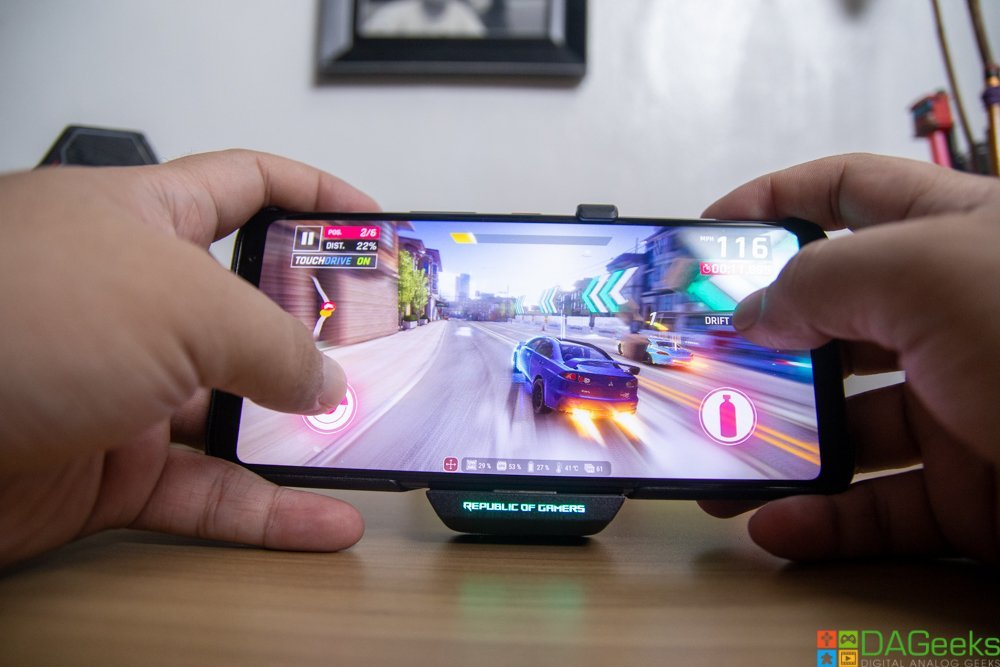
It also has Game Genie that helps you maximize your gaming experience by providing you all the necessary tools from performance-boost options to streaming-related settings. You can disable your notifications so you can game in peace, but you can also set an exception for an alert to pass through, which is very useful for the significant others.
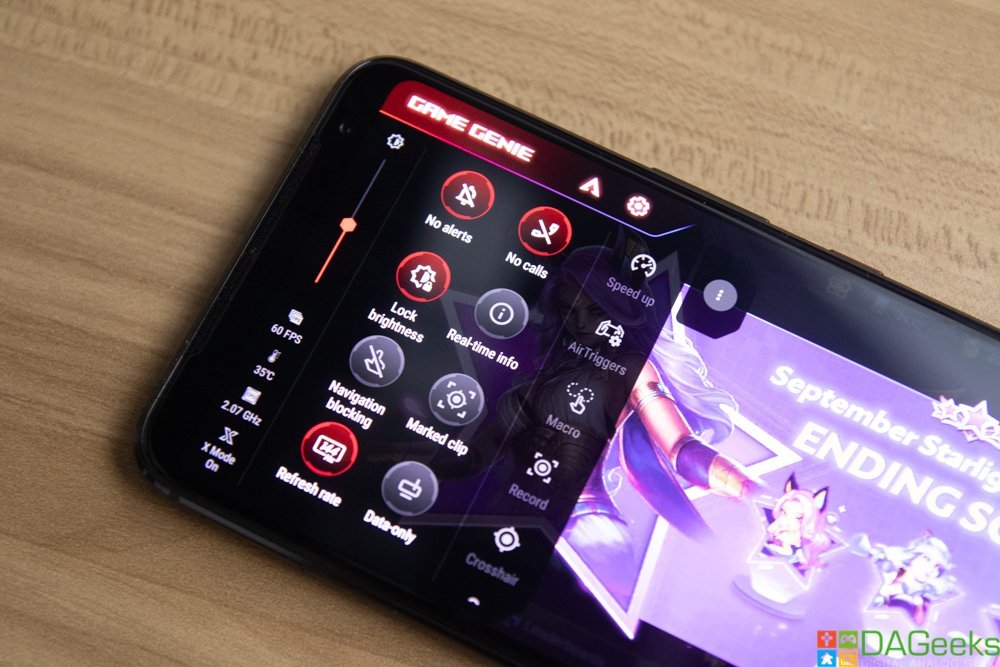
You can also toggle real-time information via this menu like your battery life, phone temperature CPU/GPU usage and frames per second. The layout is quite minimalist and not distracting when you’re playing a game.
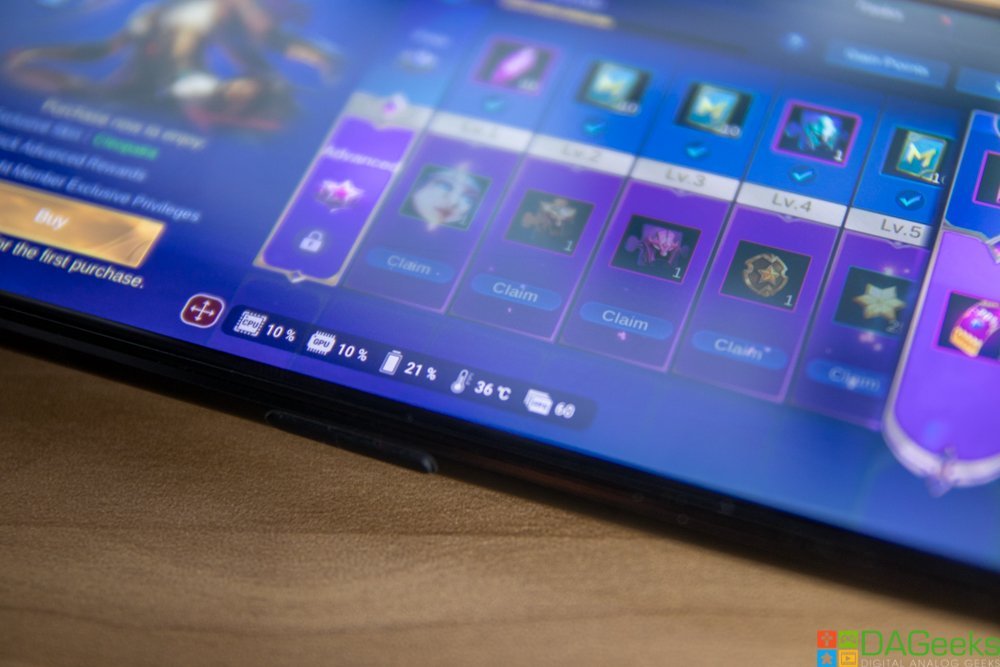
Now for a gaming device, the bulk and heft of the phone are tolerable. You need the big screen for a more immersive experience, a bigger battery for longer gaming sessions, plus it’s very comfortable to grip because of its size. For an everyday phone, it’s cumbersome. I used the phone for about a month and I just can’t get over its size whenever I take it out for errands.
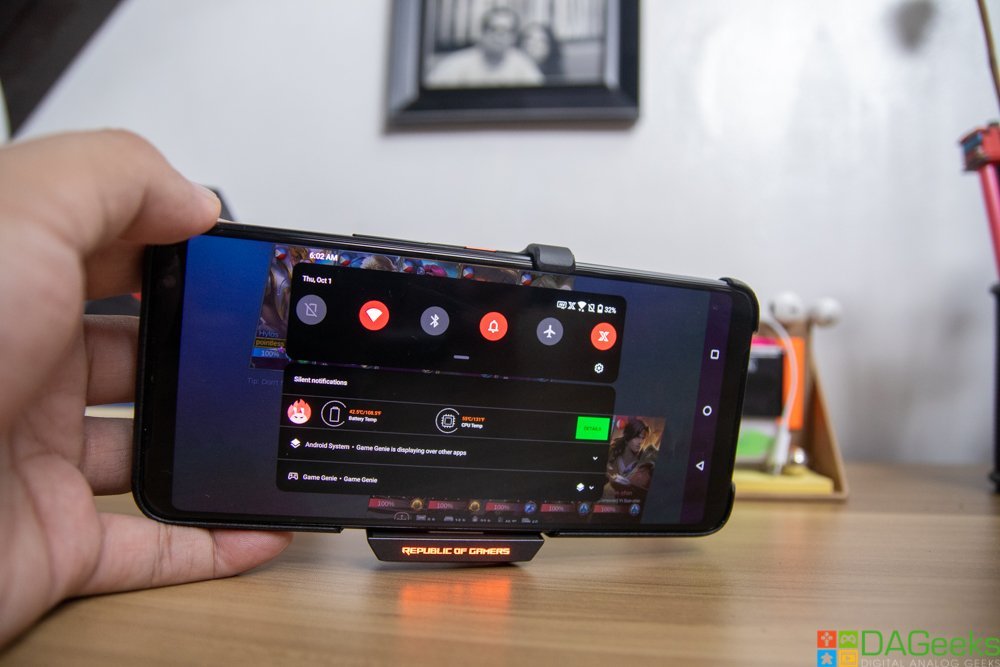
Verdict
Like I said, third time’s a charm and the third installment of the ASUS ROG Phone did not disappoint. Again, as I’ve said in the 2 previous reviews, we hope that more high-quality games would come out that can push these devices to its limits. If you’re looking to buy a dedicated gaming smartphone and don’t want to dish out flagship dough, we’re still impressed that ASUS can produce such a powerful device and keeping its cost down. It’s either that or the flagship arena just skyrocketed their prices just because.
If you can tolerate the size of this thing, it’s definitely a good buy. The battery, the performance, the accessories, everything that the ROG Phone 3 has to offer is all catered with the gamer in mind. Out of the box, you can go ahead and stream your game without the hassle of looking for third-party apps to help you with that. If you need a boost of power, Game Genie gotchu bro!
There are currently 2 variants of the ROG Phone 3 Classic today. The 12GB/512GB config will set you back around ₱49,995 and the higher 16GB/512GB will cost around ₱54,995. Both variants come equipped with the Snapdragon 865+ processor.
MOAR PICS
Tech Specs
| Color | Black Glare |
| Capacity | 512GB UFS 3.1 |
| Weight and Dimensions | 171mm x 78mm x 9.85mm 240g |
| Display | 6.59” (2340 x 1080) 144Hz/1ms AMOLED 10-bit HDR |
| Processor | 3.1 GHz Qualcomm Snapdragon 865+ 5G |
| GPU | Qualcomm Adreno 650 |
| Memory | 12GB/16GB LPDDR5 |
| Main Camera | Sony IMX686 64MP |
| Second Camera | 13MP 125 ultrawide-angle camera (11mm equivalent) |
| Third Camera | 5MP Macro lens |
| Front Camera | 24MP (27mm equivalent) |
| Video support | 8K UHD (7680 x 4320) video at 30 fps for main rear camera
4K UHD (3840 x 2160) video at 30 / 60 fps for main rear camera, at 30 fps for second rear camera 1080p FHD video recording at 30 / 60 fps 720p HD video recording at 30 fps 3-axis electronic image stabilization for rear cameras Time Lapse (4K UHD video) Slow Motion video (4K at 120 fps; 1080p at 240 / 120 fps; 720p at 480 fps) |
| Wireless Connectivity | Integrated WiFi 6 (802.11a/b/g/n/ac/ax, 2×2 MIMO)
Dual-band 2.4GHz/ 5GHz WiFi Bluetooth® 5.1 (BR/EDR+LE), supports Qualcomm® aptX™ Adaptive Wi-Fi Direct NFC |
| Navigation | GNSS support GPS (L1/L5), Glonass (L1), Galileo (E1/E5a), BeiDou (B1/B2a), QZSS (L1/L5) and NavIC (L5) |
| Sensors | In-display fingerprint sensor, face recognition, accelerometer, e-compass, gyroscope, proximity sensor, Hall sensor, ambient-light sensor, ultrasonic sensors for AirTrigger 3 and grip press |
| Battery | 6000 mAh, supports Quick Charge 4.0 and PD Charging |


